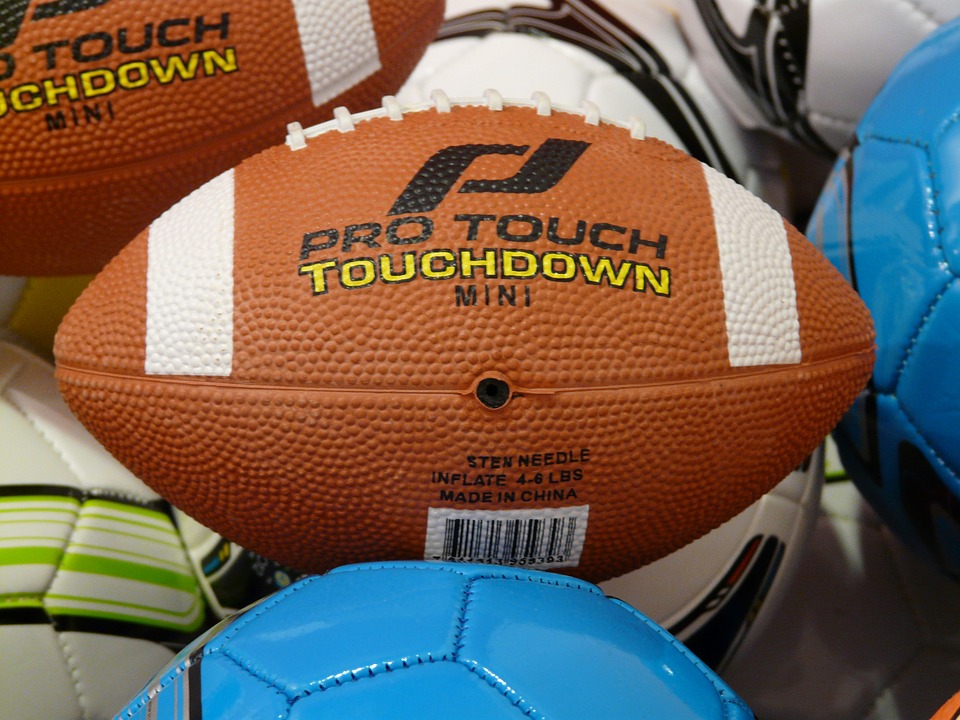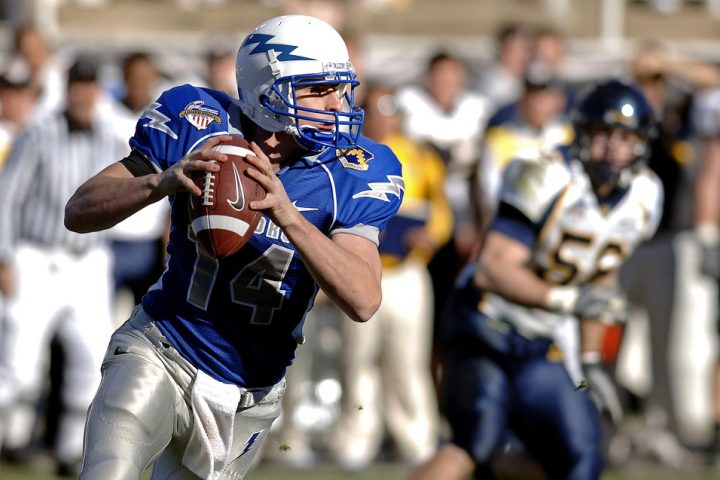I know there are those who lack enthusiasm for professional football, but to me it is akin to not liking chocolate. As the play-off portion of the NFL season is underway, and the Superbowl approaches, it’ll be difficult for even the least likely fan to avoid the hype.
Professional football eclipsed Major League Baseball as the “national pastime” long ago, and the Superbowl has become the largest annual media event in the nation. The Superbowl is something close to a holiday, inspiring festivities replete with food and drink and guests. According to en-us.nielsen.com, viewership reached 98.7 million for the 2009 match-up between the Pittsburgh Steelers and the Arizona Cardinals. Upwards of 151.6 million viewers tuned in for at least six minutes. The half-time show has become a mini-concert performed by some of popular music’s biggest stars, such as U2, Bruce Springsteen, and Janet Jackson. This year it is to be The Who. Advertisers paid 2.7 million dollars for a thirty second commercial slot during the game (en-us.nielsen.com). This is a huge business, and unless you turn off your computer, radio, and television and isolate yourself from the general public, you’ll likely be up to your ears in Superbowl coverage for the two weeks leading up to the game.

Regardless of your work environment, neighborhood, or social circle, it is likely you will know someone who is hosting or attending a Superbowl party. I imagine there will be many of you that are invited to one, yet know little more about football than what you hear around the water cooler or read in the headlines. For those who don’t want to pass on the opportunity to meet friends, improve relations with a coworker, or somehow feel obligated to attend such an event, but hesitate because you know nothing about football, I may be able to help.
Professional teams are not contacting me for help devising a game-plan, but as a longtime NFL fan and bit of a geek about such things, I feel more than qualified to provide a synopsis of the basics you need to enhance your experience at the party. Here is what you should know:
1) The two teams playing won their respective conference play-off championships and will now compete for the overall championship (Superbowl Title.)
2) The game is played in 4 quarters of 15 minutes each. The game clock shown on your television screen will be a 15 minute countdown of the current quarter.
3) The football field is 120 yards long including a ten yard “end zone” on each end. Each team has the objective of advancing the ball across an assigned end zone line in order to score a “touchdown”, which is 6 points. It is also the objective to prevent the other team from doing so. The teams switch end zone destinations after each quarter.
4) Play begins in the first and third quarters with one team kicking the ball to the other and attempting to tackle the player on the other team who catches it. That player will attempt to avoid or break through the tacklers in an effort to advance the ball as far as possible. He may advance it all the way to the end zone, thus scoring, but will most likely be tackled well before that.
5) Once the kick-off play is completed (player is tackled on the ground), then that player’s team will send its “offense” onto the field. This will be eleven players, some of whom will be largely responsible for blocking the other team while the others will handle an attempt to advance the ball for a score. The kicking team will send out its “defense”, which is comprised of eleven players who will attempt to tackle the offensive players with the football. They may also hope to take the football away from the offense so that their team’s offense may then get a chance to advance the ball in the other direction for a score.
6) By rule, an offensive team has four tries (called downs) to advance the ball ten yards. If they are successful, they will be awarded four more downs to advance the ball ten more yards, and so on. On each of these downs, the offense runs a play. This is initiated by the player bent over in the center of the line handing the ball between his legs to the quarterback. This is called the “snap.” The quarterback can then do one of three things; hand the ball to someone behind him who will run the ball for as many yards as possible; attempt to pass (throw) the ball to a player on his team who is running down the field; or run with the ball himself. A player may score a touchdown on any play if the defense fails to tackle him.
For example: On the first play it will be first down and ten yards to go (in order to achieve a new set of downs.) This will be indicated on the television graphic with a “1 and 10.” If the first play is a pass from the quarterback to another player on his team, and that player is then tackled after gaining a total of seven yards on the pass and run, it will now be “2 and 3.”
7) If a team fails to gain ten yards by the completion of fourth down, then the other team gains possession of the ball where that team left off. That means the opposing team can send out their offense and attempt to advance the ball and score from that yard line. This often means that teams will choose to punt (kick) the ball on fourth down. This means that they will most often need to achieve ten yards with only three downs in order to keep their offense on the field. Punting allows the team to get the ball much further way from the end zone they are defending before the other team begins its series of downs.
8) On any play the defense may knock the ball from an offensive player’s hands causing a “fumble”, which may be “recovered” by either team. If a defensive player recovers, then that team will now send out its offense to begin a series of plays aimed at scoring. Similarly, a pass that is caught by a defensive player is said to be “intercepted”, and will result in that team sending out their offense from the yard line at which the intercepting player was tackled. Defensive players may pick up fumbled balls or return interceptions for touchdowns as well.
9) If a team has advanced far enough down the field toward the end zone, possibly by virtue of a play that gained many yards, or by gaining a new set of downs repeatedly, but now faces fourth down, the coach may choose to attempt a field goal rather than punt. During a field goal attempt, the ball is snapped to a “holder” who is kneeling on the ground and places the ball down on one end for the kicker to try and kick it through the yellow goal posts at the back of the end zone. If they are successful it is worth three points.
10) A short field goal (known as an extra point) is also kicked following a touchdown, generally bringing the total score to 7 points. Also an offensive player tackled in the end zone that they are trying to move away from, results in “safety”, which is two points for the other team. In that case the safety scoring team also receives the ball on a kick from the other team.
11) After all touchdowns and field goals the scoring team initiates play by kicking off to the other team as in the beginning of each half.
12) The officials (referee, etc.) are in charge of upholding the rules. There are various penalties that are commonly administered against the offensive team, such as moving before the ball is snapped, holding the defensive players (rather than blocking) during the play, or taking too long to snap the ball. Defensive teams are often called for interfering with a pass or grabbing the facemask during a tackle, etc. Penalties are assessed by counting off yardage against or for the offensive team.
13) When on offense, teams usually have a play clock that counts down from 40 seconds from the time one play ends until the ball needs to be snapped for the next play. This clock will also appear on the television screen.
14) Lastly, although the game is played in “60 minutes”, the viewing time is more like three hours. The game clock stops after each quarter, with two minutes left in each half, when a player goes out of bounds while running with the ball, or if a pass attempt falls incomplete. Also each team has three timeouts per half that will stop the clock. Delays in play may occur when a team “challenges” a ruling by an official (fumble, pass completion, yard line of gain, etc.) and the referee will then go view camera replays of the play so as to make sure the call is correct.
The fourteen points above may have seemed far more than a basic synopsis, but I said nothing of player positions and formations during plays, strategy and schemes, and gave only the most fundamental rules. If you wish to become more versed in the game there are plenty of in-depth resources at your disposal on-line or at the bookstore. The above information should provide you with the essentials and practical viewing knowledge to join with the fun at your boss’s Superbowl party!
Source:
- https://www.prescottpapers.com/blog/blog-directory.php
- https://www.nfl.com/super-bowl
- https://www.wikihow.com/Throw-a-Super-Bowl-Party

